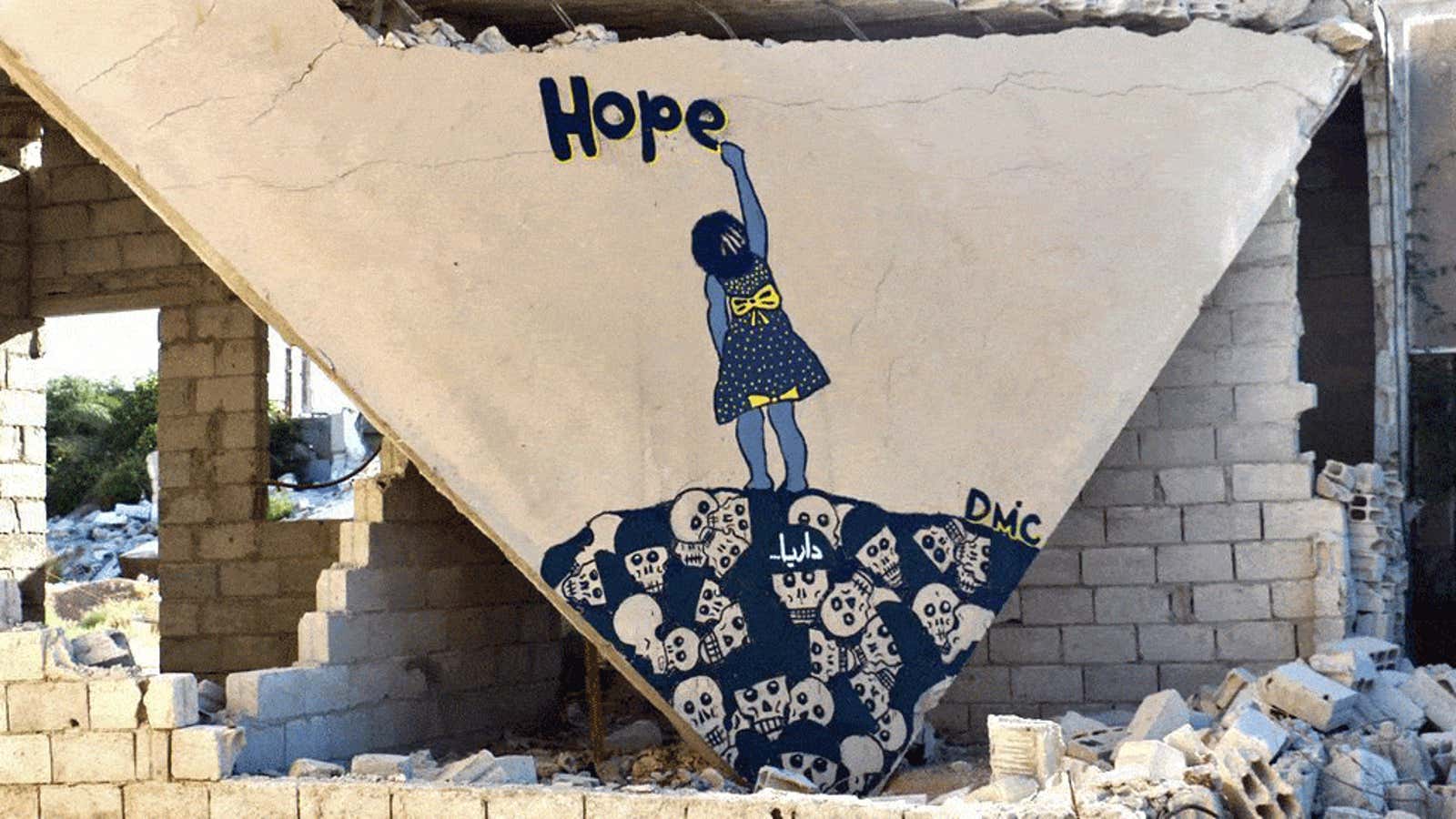Syria’s answer to Banksy is Abu Malik al-Shami, 22-year-old rebel fighter. He paints on rubble in Darayya, a suburb outside Damascus hit hard by the civil war.
Al-Shami makes murals to cheer Syrians and conjure beauty from destruction. When the Free Syrian Army soldier began painting in 2014, he worried that Darayya’s citizens would resent his repurposing of destroyed homes, but quickly found a burgeoning fan club, instead.
“People started asking [about] these murals. They started giving ideas, tips and good locations. They gave critiques for the paintings to be more beautiful and complete,” he told Syria Direct. “People’s advice and comments gave me a lot of motivation to keep going.” Al-Shami has painted 30 murals in two years with guidance from locals and artists worldwide.
Al-Shami’s work is playful, sweet somehow, depicting guns shooting flowers, children, hearts, soldiers, moons, and messages in text. It’s ironic yet sincere, not least for canvasses of concrete blocks and fallen walls. Despite a grim reality—the friend who introduced him to graffiti has since died in battle—the paintings are imaginative and humorous.
Al-Shami even sees an upside to painting on rubble: The irregularity of his canvasses—fallen walls, roofless buildings—project paintings in all directions, making them especially visible. It is on one such a crooked block that al-Shami painted a girl in a blue dress with yellow bows, standing on her tiptoes on piled skulls, writing “hope.” This image is what caught the world’s eye in the summer of 2014 and won him the nickname ”Syria’s Banksy.”
Both the Brit who got rich making street art legit and Syria’s rebel street artist share stylistic similarities and an activist streak, but it’s impossible to overlook the critical differences. Banksy was a tourist when he famously painted the West Bank Barrier. Al-Shami, on the other hand, is in the trenches, both participant and victim in the war ravaging his country.
